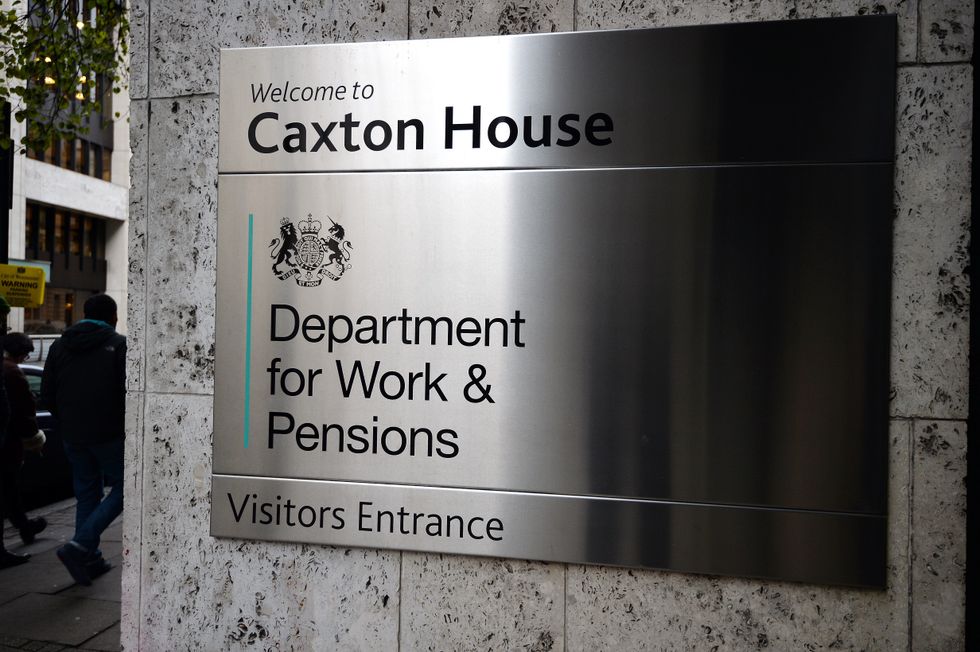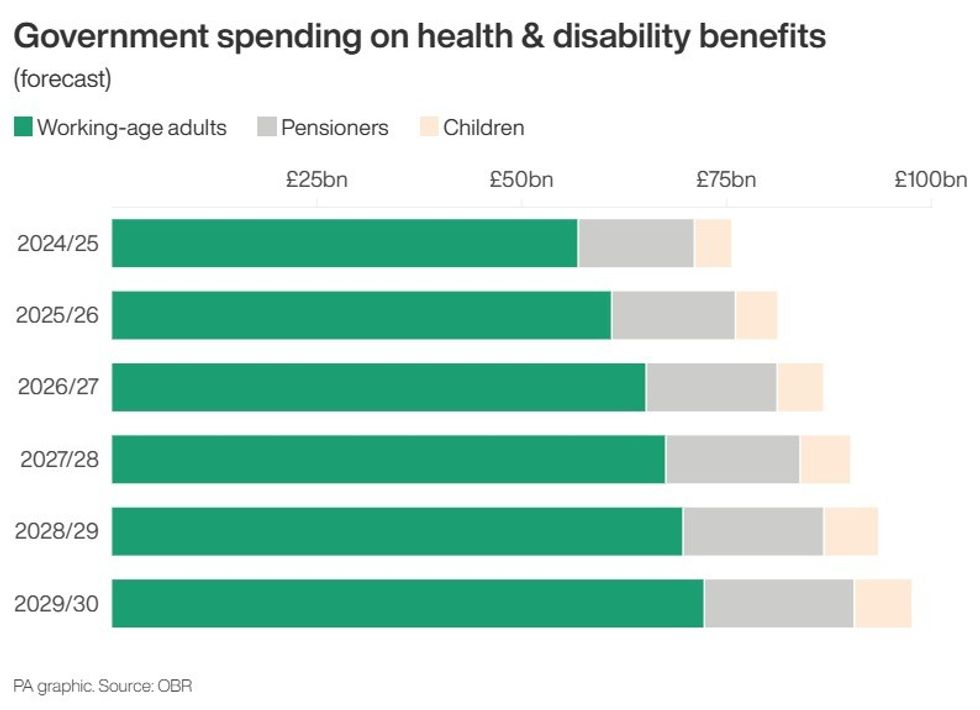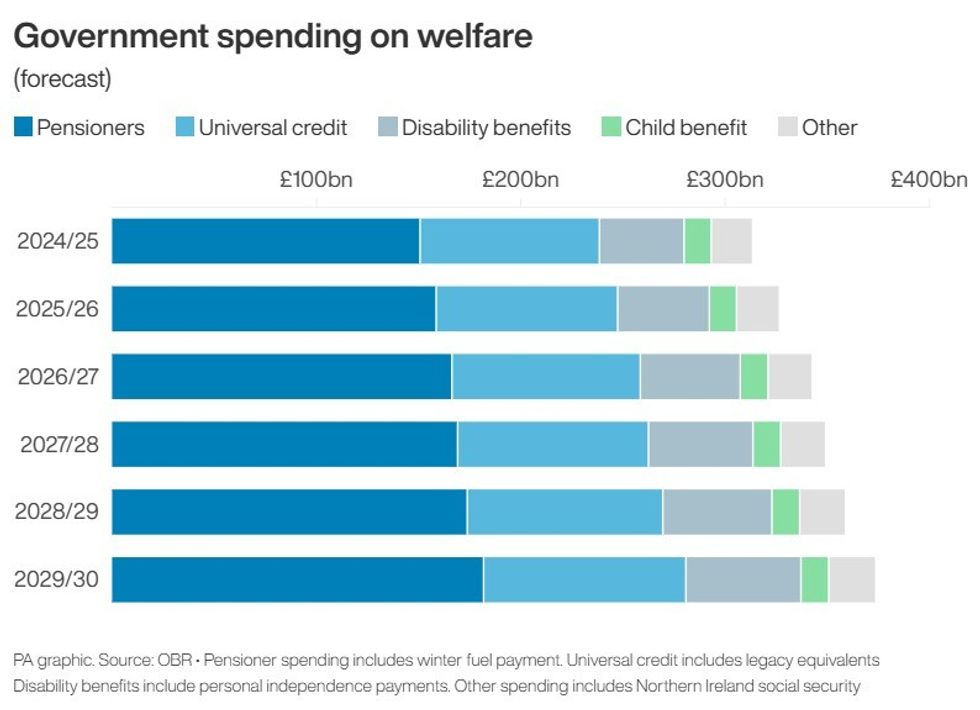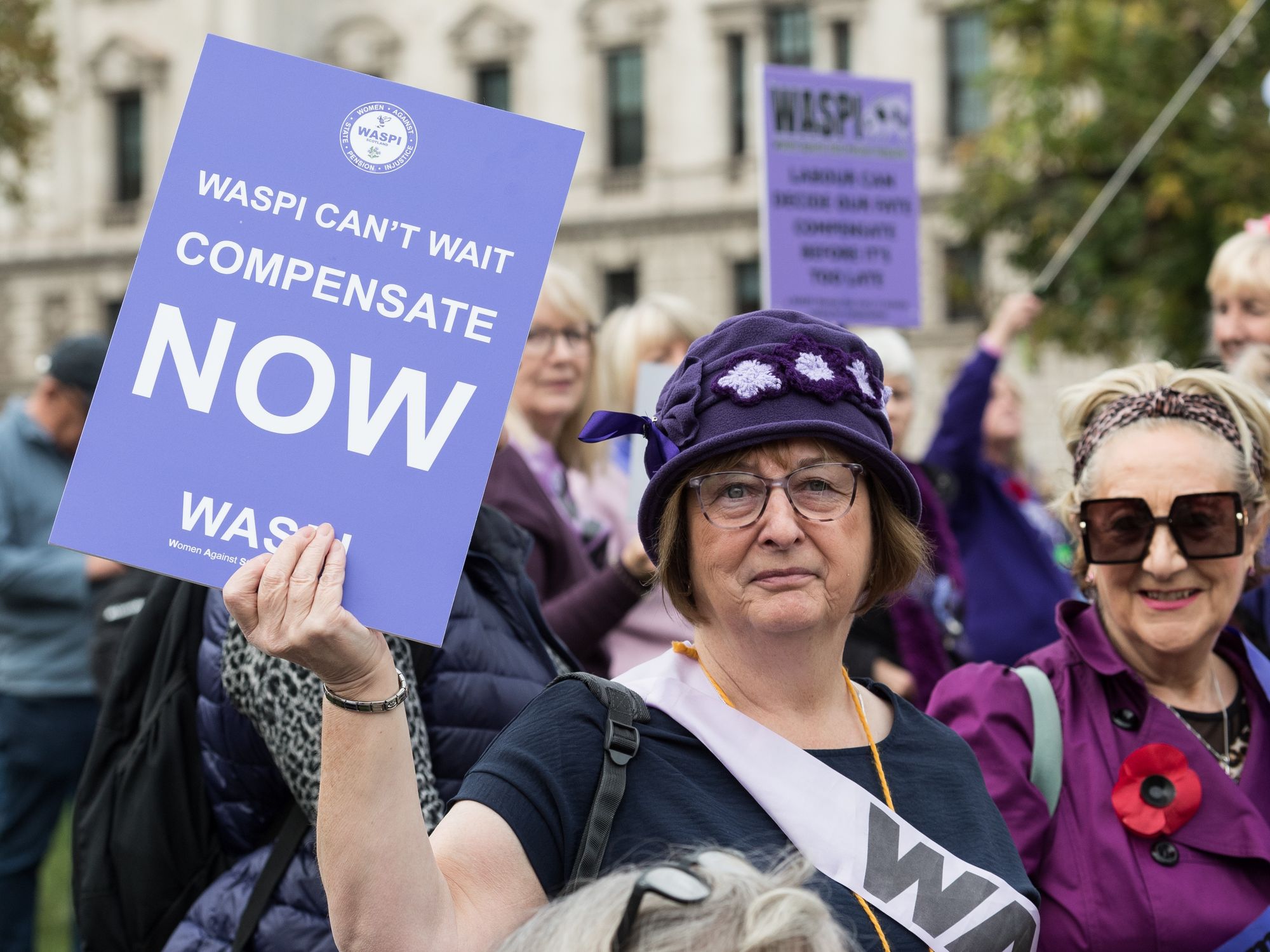What does Britain spend on its benefits bill - and how much will it rise under Keir Starmer?

New figures show working-age adults and pensioners will receive the lion's share of the £373 billion benefits bill by 2030
Don't Miss
Most Read
Britain's benefits bill is expected to rise significantly over the coming years, fuelled by an ageing population and a sharp increase in the number of people claiming health and disability benefits.
According to the Office for Budget Responsibility (OBR), the Government is forecast to have spent £313 billion on welfare in 2024/25 - 10.9 per cent of the country’s gross domestic product (GDP).
By 2029/30, welfare spending is projected to reach £373.4 billion, a rise of £60.4 billion, or nearly 20 per cent.
Despite this increase in absolute terms, welfare expenditure is forecast to fall slightly as a proportion of GDP, dipping to 10.8 per cent.
Pensions take the largest share
The biggest portion of the benefits bill is spent on pensioners. In 2024/25, £150.7 billion was allocated to pensions and related support, including pensioner housing benefit, pension credit and winter fuel payments.
This accounts for almost half (48 per cent) of the total welfare budget.
By 2029/30, spending on pensioners is expected to climb to £181.8 billion, still just under half (49 per cent) of overall welfare expenditure.
The increase is largely attributed to the UK’s growing elderly population and the impact of the "triple lock" policy, which ensures state pensions rise by the highest of average earnings growth, inflation, or 2.5 per cent annually.
Universal Credit and Disability Benefits Also Rising
Universal Credit represents the next largest portion of welfare spending. It made up 28 per cent of the 2024/25 total, costing £87.8 billion. This figure is forecast to grow to £99 billion by 2029/30.
Disability benefits currently account for 13 per cent of welfare spending, totalling £41.4 billion in 2024/25. That number is expected to rise sharply, reaching £56.3 billion by the end of the decade.

The Government is forecast to have spent £313bn welfare in 2024/25, according to the Office for Budget Responsibility (OBR).
| PA
Gov spending on health
|OBR
In contrast, the child benefit budget is forecast to remain largely flat, increasing only slightly from £13.3 billion in 2024/25 to £13.6 billion in 2029/30.
Other welfare-related spending, including areas like social security in Northern Ireland, made up six per cent of the 2024/25 budget, amounting to £19.9 billion.
What's driving the rise?
The OBR identifies two key factors behind the surge in welfare spending. The first is increased expenditure on pensions, driven by the ageing population and the triple lock.
Of the £60.4 billion rise forecast between 2024/25 and 2029/30, £31.3 billion - just over half (51 per cent) - is expected to go to pensioners.

Pensioners take up majority of the bill
| GETTY
Gov spending on welfare
|OBR
The second major factor is the growing number of people eligible for health and disability-related benefits. These include disability living allowance and personal independence payment.
The OBR estimates that £14.9 billion of the projected increase in spending (25 per cent) will be due to these benefits.
Breakdown by age group
Spending on health and disability benefits is expected to reach £97.9 billion in 2029/30, up from £75.7 billion in 2024/25. This includes a wide range of entitlements such as employment and support allowance, incapacity benefit, carer’s allowance, and health-related elements of Universal Credit.
In 2024/25, 75 per cent of this spending — or £56.9 billion — went to working-age adults. Pensioners received 19 per cent (£14.2 billion), while children received six per cent (£4.5 billion).
By 2029/30, the proportions are expected to remain broadly similar: 74 per cent for working-age adults (£72.3 billion), 19 per cent for pensioners (£18.3 billion) and 7 per cent for children (£7.0 billion).

Spending on health and disability benefits is expected to reach £97.9 billion in 2029/30
| PEXELSComparison with other departments
In 2023/24, actual spending on health and disability benefits stood at £66.3 billion.
This exceeded the Government’s spending on defence (£57.6 billion) and transport (£32.6 billion), but was still below the education budget (£127.0 billion) and total health and social care spending (£196.7 billion).
The DWP had the highest overall expenditure among all government departments in 2023/24, with total spending reaching £275.1 billion — up from £239.1 billion the year before.
More From GB News










